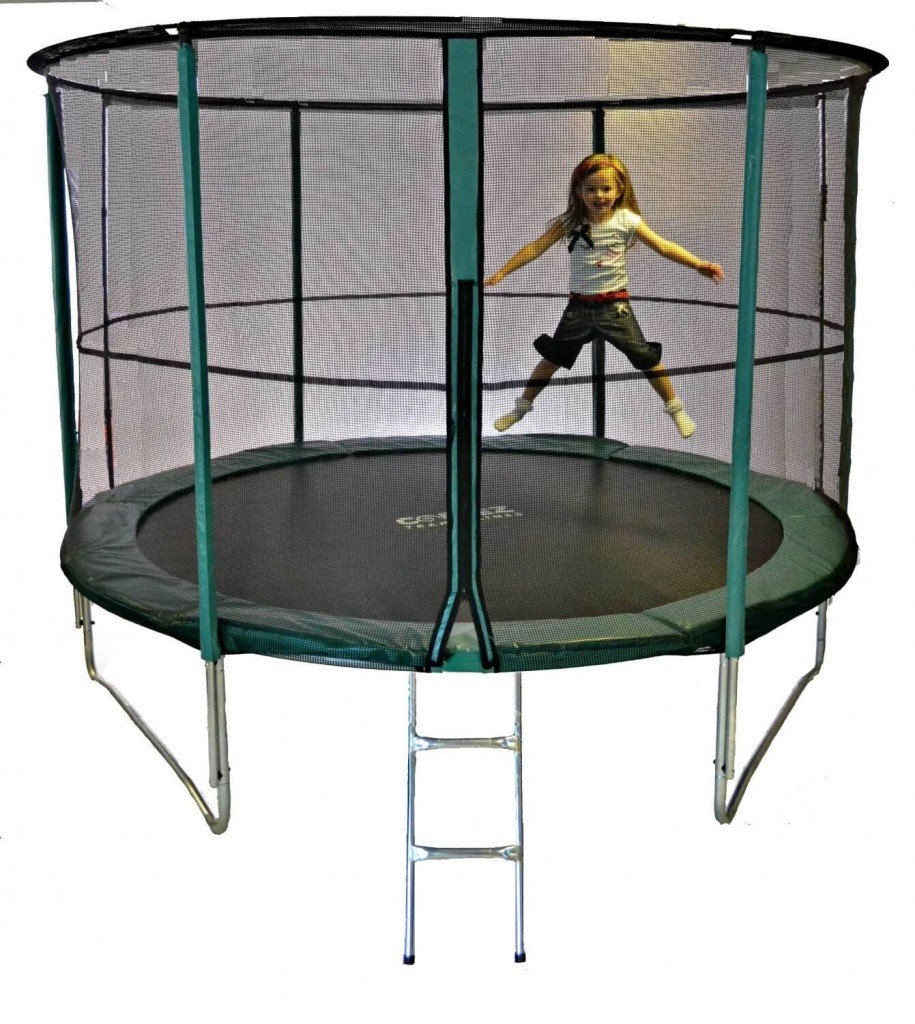Trampolines are a great source of fun and exercise, but they can also be used for acrobatics, competitions and even the Olympics! If you’re new to trampolining and you want to start off with some simple moves before you build up to the bigger stuff, or if you’re more advanced and you want to learn something new, then read on for our guide to impressive trampoline tricks!
We are going to start with the basics and build up to the more impressive stuff, so if you are already familiar with basic trampoline techniques feel free to skip ahead.
1. Bouncing
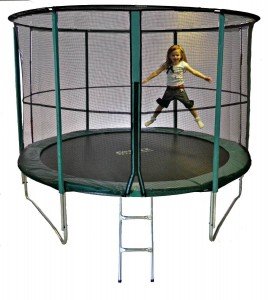 Before you attempt any tricks, you will need to perfect your jumping style to avoid injury and to make future tricks easier. Start by jumping on the trampoline as you would on the floor. Bend you knees slightly, jump into the air, point your feet as you go up, raise your arms straight above your head, keep your body straight and bend your knees slightly when you land. It’s important to incorporate the arms as this will increase momentum and help you jump higher. Make sure you are comfortable just jumping on the trampoline before you proceed.
Before you attempt any tricks, you will need to perfect your jumping style to avoid injury and to make future tricks easier. Start by jumping on the trampoline as you would on the floor. Bend you knees slightly, jump into the air, point your feet as you go up, raise your arms straight above your head, keep your body straight and bend your knees slightly when you land. It’s important to incorporate the arms as this will increase momentum and help you jump higher. Make sure you are comfortable just jumping on the trampoline before you proceed.
2. Tuck Jump
Once you’re comfortable with jumping on the trampoline, we can proceed to our first ‘trick’. The tuck jump serves as a basis for many more difficult tricks. Start by jumping normally on the trampoline. Bend your knees slightly, jump up through your feet and lift up through your arms, and bend your knees slightly as you land.
Complete three regular jumps to increase momentum, and then on the fourth jump attempt the tuck. When you are at the top of your jump bring your knees up to your chest and grab onto them with both hands so you are in a ‘tucked’ position in mid air. After your tuck straighten your knees and body, and then land with slightly bent knees. The tuck should only last for a moment, and you should have straightened out by the time you descend. Practice this jump until you feel comfortable before proceeding further.
3. Pike Jump
The pike jump is similar to the tuck jump, but instead of tucking your knees into your chest you are going to extend them and aim to tough your toes (or feet or legs if you are less flexible). You will start by doing three regular jumps (remember to lift up through your arms!) and then at the top of your jump extend both legs forwards in front of you (point your feet) and bend to touch your toes so that your body resembles an L-like shape.
Reverse the position when you start to descend so your body is straight as you go down, and land with slightly bended knees.
4. Straddle Jump
This jump is similar to a pike jump, but this time you will be doing a quasi-split in mid air. Begin by doing your regular three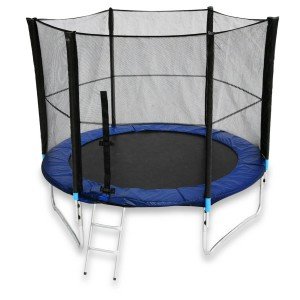 jumps with extended arms and a straight back. On the fourth jump, extend your legs outwards and bend forward to touch your toes (or feet or legs) with your arms (which will also be extended outwards). Rather than trying to achieve a perfect slip (and potentially landing badly as a result) instead extend your legs outwards at a 45 degree angle. Your legs should resemble a triangle shape. This position should only last for a second, and when you descend you will need to straighten your body, straighten your legs and, as always, land with slightly bent knees. Timing is very important for the straddle jump as a bad landing could be quite painful.
jumps with extended arms and a straight back. On the fourth jump, extend your legs outwards and bend forward to touch your toes (or feet or legs) with your arms (which will also be extended outwards). Rather than trying to achieve a perfect slip (and potentially landing badly as a result) instead extend your legs outwards at a 45 degree angle. Your legs should resemble a triangle shape. This position should only last for a second, and when you descend you will need to straighten your body, straighten your legs and, as always, land with slightly bent knees. Timing is very important for the straddle jump as a bad landing could be quite painful.
All the tricks we have looked at so far serve as a foundation for the harder stuff. It is really important that you are confident with the previous tricks before proceeding onto the harder stuff, so take some time to master everything we’ve covered so far before going onto the twists.
5. Twist
Start by doing simple twists. Take a small jump off the ground (not a big jump) and turn in the air so you are now facing the back. Do the same thing but do a complete turn in the air so you start and end in the same position. Then do the same thing but try to turn twice in the air (i.e. a double twist).
The landing is the most complicated part of the twist because it is quite hard to time it right so that you land on your feet. It is therefore important that you don’t jump too high and don’t go for a 360 degree twist before you feel comfortable with a half twist. You will eventually be able to do twists in mid air in a vertical position, but this will take time and shouldn’t be attempted too soon.
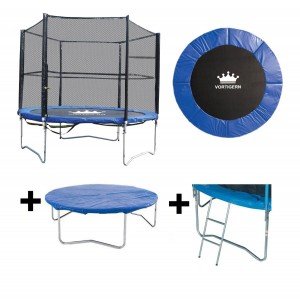 6. Seat Drop
6. Seat Drop
The seat drop involves you landing on your bum in a seated position and getting yourself back up again in one movement. Start with your regular jumps (three jumps with arms reaching up and knees slightly bent on landing) and on the fourth jump rotate your hips forward after you ascend into the air, and when you start to go down straighten your legs and your back.
You should end up sitting on the trampoline mat with your legs stretched in front of you, your toes pointed and your back straight. When you land, make sure your hands end up by your sides so, if desired, you should be able to easily bounce back up into a seating position. Another variation of this is to take a much smaller bounce so you don’t go very high at all, land in a seated position and bounce straight back up into a standing position.
7. Knee Drop
The knee drop, as the name suggests, will involve you landing in a kneeling position. Rather than jumping high above the mat, at first you will simply bounce your way slightly above the mat, thrust your hips slightly backwards, straighten your thighs, bend your knees and land.
You should be able to easily bounce your way off your knees back into a standing position, and then bend your knees to stop yourself bouncing back up. As you improve you should be able to take larger jumps, but start off with the basics.
8. Dog Drop
The dog drop is very similar to the knee drop, but rather than landing on your knees alone you will land on your hands and knees at the same time. Start off without jumping. Simply drop forward and make sure that your hands and knees touch the trampoline at the same time to create a smooth, fluid motion. Once you’re down on your hands and knees attempt to bounce up and down whilst keeping the dog position before bouncing your way back up.
This is a simple but important move, because if you are high in the air and you can’t land on your feet you will need a safe way to land. Attempt the dog drop several times without jumping before incorporating a bigger jump to make sure you have the basics down.
9. Front Drop
When you first attempt the front drop, start from the dog drop position. Bounce up, extend your legs and bend your arms 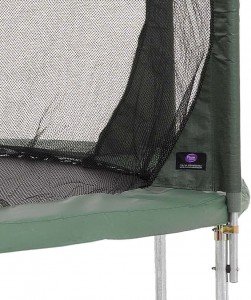 forward in front of your body so you end up resting on your arms in a lying down position. Do this several times, then attempt it standing up with your legs bent.
forward in front of your body so you end up resting on your arms in a lying down position. Do this several times, then attempt it standing up with your legs bent.
Don’t do a big jump the first times you attempt this: simply bounce into a front drop and then attempt to bounce yourself back into a standing position. Once you have mastered this you can start doing it with bigger jumps. Make sure each stage is comfortable before you proceed.
10. Back Drop
This is a daunting but easy jump. Start off by falling from a lower height (such as standing with your knees back), and then try just falling back on the trampoline. Then start with a slow bounce, fall backwards and bounce your way back up.
Once you feel comfortable with this start with a larger jumper, fall backwards, shoot your legs out, arch your back and you should bounce back onto your feet. Take your time with this one and don’t push yourself to do more than your comfortable with.
11. Front Handspring
This move requires a trampoline which is loud enough to accommodate the whole handspring without you falling off the trampoline. You will jump a few times, raise your arms, dive forwards so you end up in a hand spring, and then end up in a table like position with bent arms and legs. From this you will eventually stand back up, but if you are new to the exercise just try landing on your back.
Keep your body tight, take your arms with you and remember to keep your momentum throughout the exercise. Take this one slow and if in doubt watch an online tutorial so you can visually follow each step.
12. Front Flip
Front flips can seem quite intimidating at first, so if you don’t want to go all out straight away start by doing forward somersaults on your trampoline. Once you feel comfortable with that, do the same motion but before the somersault start with a small jump. Bend your knees so you are closer to the ground at first, and as you feel more confident start jumping higher before the somersault.
When you are ready to do a full front flip, start by jumping with your arms up (keep them up rather than forward) and, when you’re ready to do the flip, lean forward at the height of your jump, bring your knees in, and unwind your body when you’re a little over half way to land on your feet. This may take a while to master, but it’s better that you cover the foundations first rather than leaping straight into it and injuring yourself.
13. Barani
This trick starts off as a front flip, but you end facing the opposite direction because you will turn around in mid air. The motion is basically the same, but instead of tucking your legs in you will need to keep them straight. For the rotation to work you will need to learn forward, put your arms up and, at the height of your jump, lower one arm and use that shoulder to move you around.
As you descend, lift the arm back up and straighten your body so that you land with a straight back and slightly bent knees. This is a pretty hard trick, so take your time with it.
14. Double Front Flip
Once you have mastered the front flip, it’s time to do it twice in mid air! Start at the edge of the trampoline. When you first attempt a double front flip it should be easier to do a one and a half front flip first so that you land on your front, then do the same but land on your back/in a seating position. Once you have that down, try the same thing but attempt two front flips in the air and land on your feet.
Height is very important as you need enough time to achieve two jumps, remember to keep your knees tucked for the second flip, and remember to keep your head tucked in at all times to avoid injury. This is an advanced trick, so don’t feel bad if it takes a while to master.
There are many variations of the flips that you can try, as well as more complicated sequences for especially advanced users. There are some crazily complicated tricks out there, but they often consist of a combination of the above and variants of them, so if you get a good foundation you could be doing very impressive tricks sooner than you think! Remember to take your time, master the basics and keep practising!
